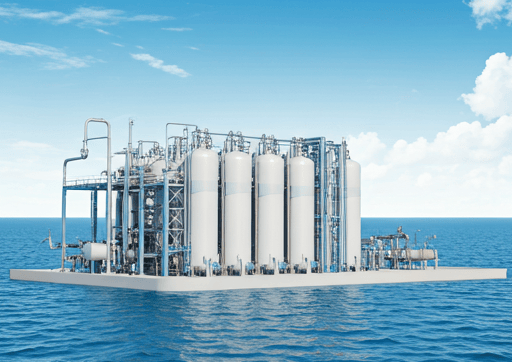CO₂ from Seawater: BASF’s innovation redefines food-grade CO₂ production
BEVERAGESSUSTAINABILITY


Carbon dioxide is vital for various food and beverage applications, from carbonating soft drinks, beer, and sparkling water to enhancing food preservation through modified atmosphere packaging (MAP). To meet these needs, CO₂ must adhere to stringent food-grade standards, with minimal levels of contaminants like methane, carbon monoxide, and sulfur compounds. Historically, food-grade CO₂ has been sourced as a byproduct of ammonia production. However, the decline in ammonia plant operations due to high natural gas prices and reduced fertilizer demand has created a significant supply gap.
To tackle it, BASF has developed and patented a new method to extract food-grade CO₂ from seawater using an innovative electrolytic process. This sustainable approach offers a high-purity alternative that can address the growing global demand while minimizing environmental impact.
How BASF’s Process Works
Seawater acts as a natural reservoir for CO₂, continuously absorbing atmospheric carbon dioxide and storing it as bicarbonate (HCO₃⁻). BASF’s patented process leverages this natural system. Using an electrolytic process called bipolar membrane electrodialysis (BPMED), the bicarbonate is converted to carbonic acid (H₂CO₃) by acidifying the seawater. The carbonic acid then dissociates into gaseous CO₂, which is efficiently captured and purified.
The process operates in the following steps:
Acidification of Seawater:
An electric current passed through a bipolar membrane splits water molecules into hydrogen ions (H⁺) and hydroxide ions (OH⁻). This lowers the seawater’s pH, converting bicarbonate into carbonic acid.CO₂ Capture:
The carbonic acid dissociates into gaseous CO₂, which is extracted through a desorption unit and collected in tanks.Neutralization:
After CO₂ extraction, the acidified and basified seawater streams are recombined, restoring the seawater to its near-neutral pH. The neutralized seawater is safe for discharge back into the ocean, with minimal environmental impact.
To ensure the process runs efficiently, seawater is partially purified before entering the system to remove hardness-forming cations like magnesium and calcium, which can cause scaling and blockages in the membranes.
Key Advantages of the Process
BASF’s seawater-based CO₂ extraction offers multiple advantages:
Sustainability:
By extracting CO₂ directly from seawater, the process taps into a renewable atmospheric carbon source, reducing reliance on fossil fuels. When powered by renewable energy like solar or wind, the process achieves carbon neutrality or even becomes carbon-negative.High Purity:
The captured CO₂ meets food-grade standards, free from harmful contaminants like methane or carbon monoxide. It is suitable for applications in beverages and food packaging.Eco-Friendly Discharge:
The neutralized seawater can be safely returned to the ocean without harming marine ecosystems, ensuring an environmentally friendly process.Scalability:
The modular design of the process allows for adaptation to varying production scales, making it cost-effective and suitable for diverse industrial needs.
Applications in the Food and Beverage Industry
The food-grade CO₂ extracted through this method is ideal for carbonating beverages like soda, beer, and sparkling water. In addition, it is highly effective for use in modified atmosphere packaging (MAP), where CO₂ displaces oxygen in food packaging to inhibit microbial growth and spoilage. This helps extend the shelf life of perishable goods while preserving their quality.
Environmental Impact and Future Potential
BASF’s innovative approach aligns with global sustainability goals by offering a renewable, eco-friendly alternative to fossil-based CO₂ production. By utilizing the ocean as a natural carbon sink and integrating renewable energy into the process, this method reduces greenhouse gas emissions and supports the transition to a low-carbon economy.
Beyond the food and beverage industry, the technology has the potential for broader applications, such as industrial CO₂ capture and storage or creating carbon-negative systems to mitigate climate change.
